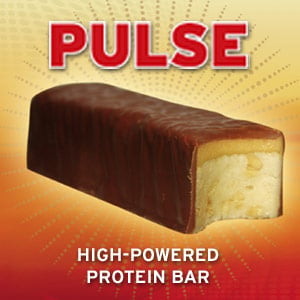Sign up to Get FREE Steroids, SARMS, Peptides eBooks
In dieser Woche EliteFitness.com Bodybuilding News, I\'m pleased to publish my friend Tom Venuto\'s article High Density Strength Training - A simple, safe and scientifically-sound method for gaining more muscle and losing more fat in less time, Part 2. If you missed Part 1, here\'s a link where you can find it.
If you’ve been working out for any significant length of time, then you’ve surely heard of “high intensity” Ausbildung… but have you heard of “high density” Ausbildung? Wenn nicht, then you’ll want to read every word of this article because high density training is a scientifically based system that can legitimately help you melt off fat and pack on slabs of muscle in less time.
High Density Strength Training
A simple, safe and scientifically-sound method for gaining more muscle and losing more fat in less time, Part 2
Von Tom Venuto, CSCS
In part one, I explained that “high density training” is the technique of con-densing more muscular work into a shorter period of time. High density training includes: (EIN) any resistance training program that uses brief rest intervals of 30-40 seconds or less between straight sets on the same exercise, oder (B) any resistance training program where two or more different exercises are performed consecutively with little or no rest between exercises.
The numerous benefits of high density training include:
1. Increased time efficiency of workout
2. Increased intensity of workout
3. Enhanced fat loss by burning more calories in same time period and enhancing post exercise calorie burn
4. Increased natural growth hormone release
5. Allows you to work around chronic minor injuries or minor joint pain safely by providing intensity and overload without heavy weights (which can aggravate injuries or joint pain)
With benefits like these, it sounds like the best thing since creatine! You might even be wondering if it could really be true and if so, why wouldn’t you train like this all the time? Density training really is an incredibly effective, but often overlooked method which can produce some astounding results. Hingegen, no training program should be used all the time because your body will adapt to it. There are also two potential downsides to high density training.
The first is that you will only be able to use a fraction of your normal weight, especially in the beginning when you’re unaccustomed to this style of workout. Deshalb, density training is not a good method for maximal strength and power development. (It’s also hard on your ego, if you’re used to lifting heavy all the time).
Zweite, high density training is outright hard work!!! In a study published in the Journal of Strength and Conditioning Research, authors Larson and Potteiger wrote, “Short rest periods are accompanied by considerable muscle discomfort due to occlusion of blood flow, lactate production, energy depletion, and decreased force production.”
You are going to feel pain, Müdigkeit, and exhaustion. You are going to sweat. You are going to feel “the burn” of lactic acid building up in your muscles. Your muscular endurance will be challenged. When training large muscle groups, you’re not only going to feel the burn in your muscles, but also in your lungs, as your heart and cardiovascular system are pushed to keep up with the metabolic demands.
Also, if you’re not scared away by hard work, then lets go ahead and take a look now at some of the various ways you can use high density training.
BASIC HIGH DENSITY TRAINING
The most basic way to use high density training is to take the regular straight set workouts you’re already doing and simply decrease your rest periods. A conventional resistance training workout calls for rest periods of 60 – 90 seconds between each set. On maximal strength workouts, the rest intervals are longer; sometimes as long as 2 bis 5 minutes between each set in order to remove lactic acid, restore energy supplies, and re-establish force production capacity. To increase density using the basic method, begin to shorten your rest intervals until you’re down to 20-30 Sekunden zwischen den Sätzen. For small muscle groups, your rest intervals may go as low as 10-15 Sekunden zwischen den Sätzen.
There are two ways you can approach this reduction in your rest intervals. One method is to try and maintain the amount of weight you are currently using and gradually shave a little time off your rest intervals with each successive workout. This will make each workout more and more difficult as you are condensing the same workload into a shorter period of time (your workouts will get shorter, but harder).
A second method is to simply cut your rest intervals all the way to 15-30 seconds in one fell swoop, rather than gradually over time. If you choose this method, you will also have to reduce your weights substantially (as much as 40-50%). With each successive workout, your goal will be to build your poundages back up while maintaining the brief rest interval.
Regardless of which option you use, it will help to have a sports watch with a seconds display so you can keep your pace on target. It’s also a good idea to time the entire workout and strive to complete each session in a slightly shorter period of time. Abwechselnd, you can strive to increase the volume and condense more work into the same amount of time.
VINCE GIRONDA\'S 8 SETS OF 8
Vince Gironda, the late trainer of champion bodybuilders and movie stars, was a huge advocate of high density training. He explained the concept in one of his articles as follows: "To acquire larger muscles, you must increase the intensity of work done within a given time. This means minimum rest between sets. (Push yourself.) I feel workouts should be timed, and constantly strive to shorten the time it takes to get through your routine. (This is a form of Progressive Resistance.) It does not matter how much work you do. What counts is how fast you do it. This is known as the \'overload principle.\' The overload principle explains why sprinters have larger leg development than long-distance runners. It is more work to run a mile than 100 Werften, but the sprinter is doing more work per second."
8 Sätze von 8 was one of the favorite training programs of Vince Gironda, and it is based entirely on the high density training concept. In his book, “Unleashing the Wild Physique,” Vince wrote, “I come back to this high intensity ‘honest workout’ more often than any other for maximizing muscle fiber growth in the quickest time possible for the advanced bodybuilder.”
For most of his students, Vince prescribed the 8 Sätze von 8 routine on a two day split, working half the body on day one, and the other half on day two. Four workouts are performed each week so that each muscle is worked twice a week.
Montag: Tag 1
Dienstag: Tag 2
Mittwoch: aus
Donnerstag: Tag 1
Freitag: Tag 2
Sat & Sun: Weg
One exercise is selected for each body part, and an exercise is chosen which will involve the greatest area of muscle mass. Each exercise is performed with very strict form and deep mental concentration. No forced reps are performed and no sets are taken to failure, except perhaps the last 2 oder 3 sets as fatigue sets it. Rest intervals are very brief, starting with about 30 Sekunden. Letztlich, the rest intervals can be reduced to as little as 10 –15 Sekunden.
Tag 1:Quadriceps, Hamstrings, Zurück, Kälber, Bizeps, forearms
1. Squats 8 X 8
2. Lying leg curl 8 X 8
3. Standing calf raise 8 X 15-20
4. Seated low cable row 8 X 8
5. Barbell curls 8 X 8
6. Wrist curls 8 X 8 (optional)
Tag 2: Brust, Schultern, Trizeps, Abs
1. Incline Dumbbell chest press 8 X 8
2. Seated Dumbbell shoulder press 8 X 8
3. Shrugs 8 X 8
4. Tricep Pushdowns 8 X 8
5. Weighted crunches 8 X 8
Wie Sie sehen können, this is a high volume workout with 40-48 sets per workout. Under normal circumstances, 40-48 sets in a session would be grossly overtraining. Hingegen, with the shortened rest intervals and lighter weights than normal, das 8 X 8 workouts can be completed in as little as 30-50 Minuten, depending on your rep speed and the time between sets and exercises.
A much more advanced version of the 8 X 8 routine using a three day split (or even a four day) split was also described in Vince’s book, “Unleashing the Wild Physique” and I wrote an article for IRONMAN magazine about this a couple years ago. Vince reserved this method for professional bodybuilders such as his star pupil Mohammed Makkawy. He said that most people with average genetics would overtain by using multiple exercises for the same body part on an 8 X 8 Programm.
Persönlich, I have seen incredible results using multiple exercises per body part on the 8 X 8 program as long as I kept the duration under 45-60 minutes and did not exceed 6 oder 7 exercises per muscle. Hingegen, unless you are an advanced bodybuilder with excellent recovery ability, the best way to introduce yourself to the 8 X 8 method is with one exercise per body part as illustrated in the sample routines above.
As with all programs, das 8 X 8 routine was not meant to be used all the time and should be alternated with traditional training and numerous other techniques.
SUPERSETS
One of the most common and well-known methods of increasing density is by using supersets. Conventional weight training is done using “straight sets.” A straight set consists of a series of nonstop repetitions, usually between 6 und 12, followed by a brief rest interval of about 60 bis 90 seconds or more. By contrast, a superset is an advanced technique where you perform two exercises in a row with virtually no rest in between.
Beispielsweise, if you are training arms, you can perform a set of dumbbell curls, then with no rest (except for the time it takes to change equipment), go into a set of barbell curls. Once you finish the set of barbell curls, you have completed one superset. An diesem Punkt, you rest for about one minute, then repeat the superset one or two more times, or for your desired number of sets. This is known as a same muscle group superset.
Eine Obermenge gleichen Muskel-Gruppe:
A1 Incline dumbbell curl followed immediately by
A2 standing barbell curl
Rest 60-90 Sekunden, then repeat for desired number of sets
You can also superset opposing muscle groups such as biceps and triceps, quads and hamstrings or chest and back. Beispielsweise, you could do your set of dumbbell curls, then with no rest, go into a set of tricep extensions. This is known as an antagonistic superset.
Antagonistic superset:
A1 Seated Dumbbell Curls followed immediately by
A2 Lying Tricep Extensions
Rest 60-90 Sekunden, then repeat for desired number of sets
Supersets are a fantastic technique for muscular development, especially if you want an effective workout in a short time span. Keep in mind that when you perform two exercises in a row with no rest in between, this will reduce the amount of weight you can handle, particularly on the second movement in each pair of same muscle group supersets. Your strength may also decrease from muscular fatigue and lactic acid buildup with each subsequent superset. Because supersets don’t allow you to use maximal weights, they are best suited for fitness, Fettabbau, body building and body-shaping, not power or strength training.
STAGGERED SETS
A staggered set is a type of superset where you combine a major muscle group exercise with a minor and completed unrelated muscle group exercise. This technique is most commonly used for abs and calves. The way you utilize this principle is to “squeeze” a set of abs or calves in between sets for any major muscle group. Beispielsweise, you could throw in a set of abs after every set of chest you do. Instead of resting and doing nothing in between sets of chest, you are doing something productive - working your abs – while keeping your heart rate up and continuing to burn calories. This also gets your workout finished much more quickly and spares you the monotony that many people feel from doing these small body parts by themselves.
Vor kurzem, natural masters bodybuilding champion Ken Babich of QuadFather.com told me that the “old timers” had a special name for this: Ken said, “I never sit down during my workout and I keep some muscle working the whole time. Beispielsweise, I will do one set on an exercise for a major muscle group, making it a point to stay in my set for 30 seconds to get the most out of it. Dann, instead of resting, I immediately do an abdominal exercise. The ‘old timers’ called this ‘in-flux training,’ meaning that some muscle is being worked during the entire workout. This fires your metabolic rate through the roof; hence you can eat well but stay lean."
CHARLES STALEY’S ESCALATING DENSITY TRAINING (EDT)™
Strength and conditioning coach Charles Staley deserves a lot of credit for bringing the concept of density back into popularity in the last few years with his EDT system. Staley’s unique take on high density training uses two workouts a week for two body parts per session (biceps and triceps for example). You select two antagonistic superset pairs such as hammer curls paired with lying tricep extensions and Cable curls paired with Tricep pushdowns. You perform as many superset pairs as you can fit into a 10-15 minute time period, which Charles calls the “PR ZONE,” and you progressively perform more work in this time frame with each successive workout by reducing the rest intervals (and increasing the poundage when possible) while maintaining consistent strict form. The recommended starting point is a 10 repetition maximum, but you do not train to failure, except possibly on the final sets as time is running out. Reps will drop with each subsequent superset as fatigue sets in. There is no fixed number of sets because the workout is based on time, not sets. The more conditioned you become, the more sets you will be able to condense into each 10-15 minute PR zone. Charles adds to the effectiveness of the program with nutritional tips and post workout recovery and restoration methods.
PR zone one (15 Minuten)
A1 Hammer curls
A2 Lying tricep extensions
PR zone two (10 Minuten):
B1 Cable Curls
B2 Tricep pushdowns
For more information on EDT training, visit integratedsportsolutions.com. Charles has published a book on EDT training for arms called, “The Ultimate Guide to Massive Arms: EDT Training.” Charles also has plans for a complete full-length book on total body EDT training scheduled for release in 2005.
TRI-SETS & QUAD-SETS
Tri-sets and quad-sets (also known as giant sets) are an extension of the superset principle. Tri sets are three exercises performed in a row and quad sets are four exercises performed in a row. Some people refer to these as “mini-circuits” although they are not the same thing as circuit training. Tri sets and quad sets are most often performed for the same muscle group, and mini circuits for different muscle groups.
An example of a tri-set for legs which was popularized by Arthur Jones and Ellington Darden of High Intensity Training (HIT) fame was:
A1 leg press 15-20 Wiederholungen, followed immediately by
A2 leg extension 15-20 Wiederholungen, followed immediately by
A3 barbell back squats 15-20 Wiederholungen (usually followed immediately by collapsing the floor in exhaustion!)
Although most people perform routines with multiple sets, this type of “high intensity” tri-set, when performed with maximum weight to failure (with spotters for safety) in the context of a high intensity training protocol, can produce some astonishing results with only one tri-set (three sets total – one on each exercise) … and it only takes about five minutes.
MINI-CIRCUITS
Tri-sets and quad-sets can also be set up with exercises for different muscle groups, much like the antagonistic supersets. A tri-set for different muscle groups is often called a “mini-circuit”:
A1. Bench Press 8-12 Wiederholungen (Brust)
A2. Seated Cable Row 8-12 Wiederholungen (Zurück)
A3. Barbell upright Row 8-12 Wiederholungen (Schultern)
Repeat mini circuit 1-2 Mal
Here’s an example of a five exercise mini circuit for the entire lower body:
1. Barbell squat 8-12 Wiederholungen
2. Adductor (inner thigh) machine 8-12 Wiederholungen
3. Split squat (aka “static lunge”) 8-12 reps per leg
4. Lying leg curl 8-12 Wiederholungen
5. Standing calf raise 15-20 Wiederholungen
No rest between exercises; Rest 2-3 minutes between mini circuits; repeat for 1 bis 2 more cycles and you’re done for legs.
CIRCUIT TRAINING
Circuit training is a very broad term that has been used for many years to describe a variety of different training methods – all with one commonality: Rather than doing multiple sets of the same exercise before moving to the next exercise, a circuit consists of a sequence of multiple exercises for different muscle groups performed for one set each one after another with little or no rest in between exercises.
The conventional “circuit training” method usually involves working your way through one set each of 8-12 Übungen (in der Regel 8-12 jede Wdh., but reps may vary). Every muscle is trained in the circuit and you move from one machine or station to the next without resting between exercises except for the time it takes to move from station to station. Once you reach the end of the entire 8-12 exercise circuit, then you take a rest period of 60-120 seconds and then repeat the entire circuit 1-2 weitere Male.
Here’s an example of a traditional circuit training program:
1. Leg press 8-12 Wiederholungen
2. Leg curl machine 8-12 Wiederholungen
3. Seated rowing machine 8-12 Wiederholungen
4. Chest press machine 8-12 Wiederholungen
5. Shoulder press machine 8-12 Wiederholungen
6. Tricep pushdown 8-12 Wiederholungen
7. Bicep curl machine 8-12 Wiederholungen
8. Standing calf machine 15-20 Wiederholungen
9. Abdominal crunch machine 15-20 Wiederholungen
No rest between exercises; Rest 60-120 seconds between circuits, repeat circuit 1-2 Mal
The benefit most often quoted for circuit training is that it allows you to get a strength training and cardio training workout both at the same time, which maximizes time efficiency. Hingegen, the verdict that most researchers have come to is that while some aerobic and strength adaptations can be achieved, BOTH are compromised by using circuit training.
Beispielsweise, a review of the literature by Gettman and Pollock suggested that 8-12 weeks of a traditional circuit training program would result in about a 5% improvement in V02max. By comparison, traditional cardio three times a week at around 75% of max heart rate for 20-30 Minuten, für 8-12 weeks will increase V02max by around 20%.
Circuits are frequently performed on machines, although they can also be done with free weights and or mixed with callisthenic and ball exercises as well. By mixing in short bouts of aerobic exercise between resistance exercises, some studies have shown a substantial increase in aerobic capacity as compared to circuit training entirely on machines.
Here\'s an example of circuit training mix with calisthenics, free weights, cardio and stability ball work:
1. Squat with 2 dumbbell front raise 8-12 Wiederholungen
2. Punch heavy bag, 2 Minuten
3. Bent over barbell row 8-12 Wiederholungen
4. Stability ball crunches 15-25 Wiederholungen
5. Walking lunge with 1 dumbbell overhead press 8-12 Wiederholungen
6. Jump rope, 2 Minuten
7. Push up with feet on stability ball 8-12 Wiederholungen
8. Incline treadmill with hand weights, 2 Minuten
No rest between exercises; Rest 60-120 seconds between circuits, repeat circuit 1-2 Mal
Circuit training, including such programs as Curves for Women and the 30 minute “express workouts” that are common in commercial health clubs today, is generally considered a beginners technique for health, fitness and weight loss. Circuit training not a very effective bodybuilding technique and is the least effective of all the density training methods for building muscle.
Although the research has demonstrated that some circuit training protocols can achieve modest improvements in strength and aerobic capacity at the same time, the real trouble with circuit training is that strength and muscle size gains are compromised due to the lighter loads required for training in circuits. Im Grunde, the more you turn your weight training into cardio training, the less effective they both become.
Hingegen, if your goal is simply health, fitness and “toning up,” you can devise some unique ways to use circuits or mini circuits that can provide a nice balance between muscle development, fat loss and conditioning, Many people tend to get very bored with conventional strength training routines which are repetitive by nature, and circuits or mini circuits can break up the monotony.
Die Quintessenz:
If you want more results while spending less time in the gym, you should absolutely experiment with shorter rest periods and supersets in your training routine – especially during periods when your primary goal is to get leaner and more muscular, and strength/power gains are on the back burner. Use tri sets and giant sets to take the intensity to an even higher level. If you’re an experienced trainee, experiment with the 8 Sätze von 8 routine and Coach Staley’s EDT methods as well. Und, if you’re a beginner and you simply want to be fitter, healthier and more “toned,” then even circuit training has it’s place and can be an appropriate way for a busy person to crunch more workout into less time.
Regardless of which “high density” training method you use, remember that there’s no free lunch. If you’re doing it right, your workouts may be shorter, but they definitely won’t be easier. Although you really could say that high-density training is a “short-cut,” at least in terms of the amount of time you spend in the gym, there is a price to pay in “blood, sweat and tears.” As the old saying goes, you can train long or you can train hard, but you can’t do both.
[sc:signoff-std]"How you can safely take the drugs used by today\'s mass monsters to create the cartoon-proportioned, superhero physique most men will only dream of..." [Here\'s a link to discover more...]
"Several books are available that purport to be guides for producing massive physiques using various anabolic drugs. Die meisten dieser Bücher sind lediglich Bilderbücher von verschiedenen Drogen, with text that reads like it was copied from drug inserts... Als solche, Sie bieten wenig praktischen Nutzen."
"One book differs in that respect. Chemische Muskel-Verbesserung."
"For those who are insistent in knowing just what the champs take, Chemische Muskel-Verbesserung ist das Buch zu lesen. Der Autor, Herr. Autor L. REA, hat über 16 jahrelanger akademischer Hintergrund, aber noch wichtiger ist, Er arbeitete mit Athleten für über 20 Jahre. Ich fand es nahezu fehlerfrei in den Aspekt der wissenschaftlichen Fakten."
 "Trust me, Dieses Buch ist nicht für die zimperlich, und Herr. Rea is a definite drug "guru" die späten Dan Duchaine in seinen frühen Tagen des hardcore Schreibens Verstand bringen. Rea shares Dan\'s hands-on experience, nicht nur Sessel Philosophie. Das Buch behandelt jedes anabole Medikament verfügbar, und beschreibt auch realen Methoden für die Verwendung solcher Drogen. Erfahren Sie, was schief gehen kann, wenn Sie selbst ein ein-Personen-wissenschaftliches experiment. Aber wenn Sie dies wünschen, I can\'t think of a better guidebook to current anabolic drug usage than Chemische Muskel-Verbesserung. Dieses Buch ist ohne Frage, Das unterirdische Steroid Handbuch des 21. Jahrhunderts."
"Trust me, Dieses Buch ist nicht für die zimperlich, und Herr. Rea is a definite drug "guru" die späten Dan Duchaine in seinen frühen Tagen des hardcore Schreibens Verstand bringen. Rea shares Dan\'s hands-on experience, nicht nur Sessel Philosophie. Das Buch behandelt jedes anabole Medikament verfügbar, und beschreibt auch realen Methoden für die Verwendung solcher Drogen. Erfahren Sie, was schief gehen kann, wenn Sie selbst ein ein-Personen-wissenschaftliches experiment. Aber wenn Sie dies wünschen, I can\'t think of a better guidebook to current anabolic drug usage than Chemische Muskel-Verbesserung. Dieses Buch ist ohne Frage, Das unterirdische Steroid Handbuch des 21. Jahrhunderts."
-- Jerry Brainium, Bodybuilding-Journalist Ironman-Magazin
[Verkauf für die nächsten 72 Nur Stunden - here\'s a link to read more! ]
Referenzen
1. Darden, Ellington, High Intensity Bodybuilding For Massive Muscles Fast, 1984, Perigree Books
2. Gettman, LR, Pollock, ML, Circuit weight training: A critical review of its physiological benefits. Physician & Sports Medicine, [9:44]-60, 1981
3. Gironda, Vince, Kennedy, Robert, Unleashing The Wild Physique, 1984, Sterling Publishing
4. Gotshalk, Lincoln, et al., Cardiovascular responses to a high-volume continuous circuit resistance training protocol, Journal of Strength und Conditioning Research, 2004, 18(4), 760-764
5. Kraemer WJ, Noble BJ, Clark MJ, et al: Physiologic responses to heavy-resistance exercise with very short rest periods. Int J Sports Med 1987;8(4):247-252
6. Robinson, Joseph M., Stone, Michael H., et al: Effects of Different weight training exercise/rest intervals on strength, macht, and high intensity exercise endurance. Journal of Strength & Conditioning Research, 1995; 9(4), 216-221
7. Staley, Charles, The Ultimate Guide to Massive Arms: Escalating Density Training, 2002, Integrated Sports Solutions

 Nun erstmalig,
Nun erstmalig, 





 Seit 1989,
Seit 1989, 

